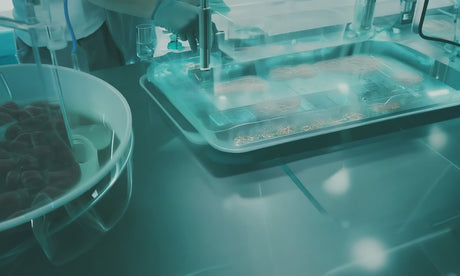Understanding Meat Production and Sustainability
The food we choose to eat has a profound effect on the planet, and meat production is often at the center of this conversation. With growing interest in sustainable alternatives, many are turning to lab-grown options as a way to reduce their ecological footprint. But how much of a difference does it really make? Tools like a cultivated meat sustainability calculator can shed light on the numbers behind our choices, offering a glimpse into the resources tied to what’s on our plate.
The Hidden Costs of Traditional Meat
Raising livestock demands significant land, water, and energy, often leading to deforestation and high greenhouse gas emissions. Beef, for instance, is notorious for its outsized carbon footprint due to methane released by cows. On the flip side, pork and chicken tend to use fewer resources, though they still outpace many plant-based foods.
A New Way Forward
Innovations like cell-cultured meat aim to address these challenges by growing protein in controlled environments, cutting down on land and water needs. While not yet widely available, this approach could reshape how we think about food. Curious about the specifics? Comparing lab-grown and farm-raised options through a sustainability tool reveals just how much impact a small shift can have on the environment.
FAQs
How accurate are the sustainability metrics in this calculator?
We’ve based our calculations on widely accepted data from scientific studies and industry reports on meat production. While exact numbers can vary depending on specific farms or labs, we use averages that reflect typical carbon footprints, water usage, and land requirements. Think of this as a solid starting point to understand the broader impact, though real-world results might differ slightly based on location or methods.
Why does cultivated meat often have a lower environmental impact?
Cultivated meat, grown in labs from animal cells, skips a lot of the resource-heavy steps of traditional farming. There’s no need for vast grazing lands, and water usage drops significantly since you’re not irrigating crops for feed or maintaining livestock. Plus, greenhouse gas emissions are often lower without methane from cows or large-scale farm operations. That said, lab-grown meat isn’t perfect—energy use for production can still be high, but it’s often a greener choice overall.
Can I use this tool to make decisions about my diet?
Absolutely, though it’s more of an educational tool than a personal diet planner. It shows you the environmental trade-offs between cultivated and traditional meat, which can help you think about sustainability in your food choices. Pair this insight with your own values, budget, and nutritional needs to decide what works best for you. It’s all about getting a clearer picture of the impact behind your plate!












